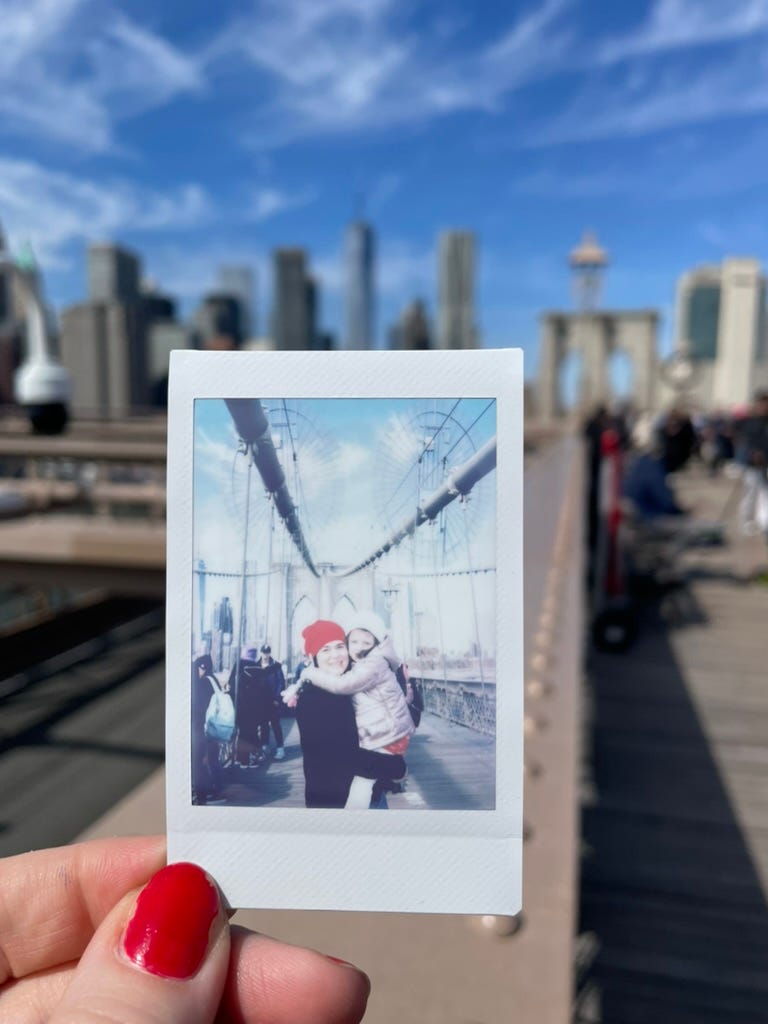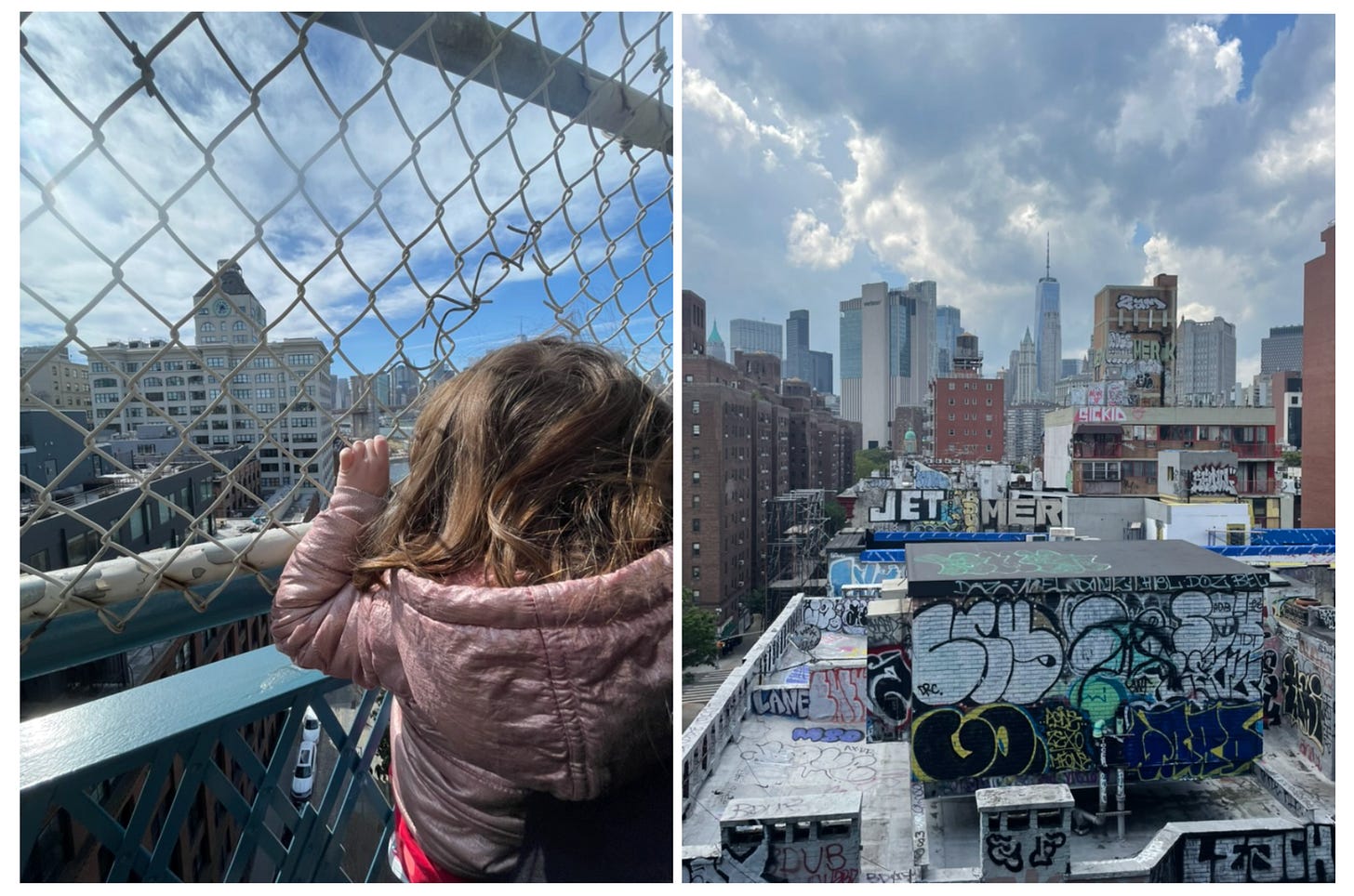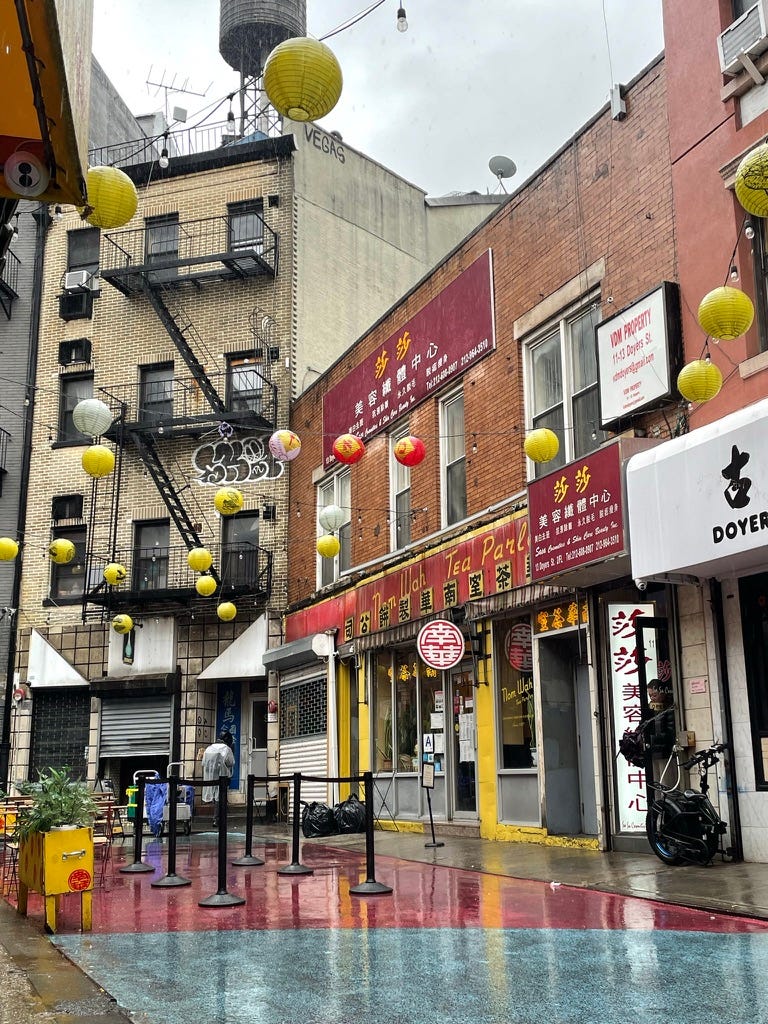A Tale of Two Bridges: NYC’s Ultimate Pedestrian Adventure
A local’s guide to exploring NYC's Iconic Bridges and Hidden Gems
One of the best things about NYC is that your own two feet can bring you an incredible adventure. Today, I’m lacing up my tour guide shoes and taking you on a virtual walking tour of one of my favorite ways to spend a day in the city—bridge hopping. With fall approaching, it’s the perfect time to set a day aside for an urban exploration. This six-mile walk will take you over both the Brooklyn and Manhattan Bridges.
Of the twenty-one bridges connecting Manhattan to surrounding areas, the Brooklyn Bridge is the most iconic. But before we get there, I suggest you start at a relatively unknown historical site less than five minutes away: Temple Court.
The Beekman: A Glimpse into Old New York
Temple Court was the original name for the building that is now The Beekman Hotel. Nine stories tall, it was one of the city’s first “skyscrapers.” When it opened in 1883 (the same year the Brooklyn Bridge opened to the public), it included more than 200 offices arranged around an ornate atrium with a pyramidal skylight. You could see Central Park from its roof.
Due to fire safety concerns, the atrium was sealed in the 1940s and remained that way for decades. Tenants left, and the building fell into disrepair. Photographers James and Karla Murray did a before/after photo series about the hotel and Scouting NY took extensive photos of the building when it was abandoned.
Today, the atrium is landmarked and meticulously preserved to its original glory. Enter through the Temple Court Bar at 5 Beekman Street. Try maneuvering your way to the top floor. Elevators, at the rear of the room, past the bar are technically for hotel guests, but I’ve been known to jump in with a crowd. The view looking down is spectacular.
Brooklyn Bridge: An Engineering Marvel
Next, head to the Brooklyn Bridge pedestrian entrance on Centre Street across from City Hall Park. In recent years, the experience of walking across the bridge has improved dramatically. The bike path (which used to run through the middle of the pedestrian walkway) was relocated to the lower level alongside vehicular traffic. Earlier this year, the city banned all the vendors that sold hats, key chains, hot dogs, and other souvenirs. Combined, these efforts have made crossing the bridge more enjoyable.
As you step onto the Brooklyn Bridge, you're walking in the footsteps of millions who have crossed since its completion in 1883. This architectural icon, designed by John A. Roebling, was the world's first steel-wire suspension bridge and the longest at the time. After his untimely death (his foot was crushed by a passing ferry while he was inspecting construction, and he died of tetanus a few weeks later), his son, Washington Roebling, took over. A fire broke out while Washington Roebling was directing the construction of one of the pneumatic caissons that became the foundation of the two towers. During the emergency, he suffered injuries that made him bedridden for the rest of his life. His mind was sharp, but he could no longer visit the construction site. His wife, Emily Roebling, took over and became the de facto lead engineer. You can read more about her on The History Channel site. I also like the story of showman P.T. Barnum walking elephants and camels across the bridge in 1884 to showcase its strength and counter public concerns.
As you approach Brooklyn, bear left and take the first staircase down to DUMBO.

DUMBO: Down Under the Manhattan Bridge Overpass
DUMBO was once a hub of manufacturing, and if you observe the cobblestone streets, you’ll see the remnants of former train tracks that transported goods from docks to warehouses. If you’ve worked up an appetite, consider stopping at Grimaldi’s or Juliana’s for a pie (they don’t do slices). There are often long lines at both restaurants, so if it’s a nice day, consider ordering a pizza to-go and enjoying it in Brooklyn Bridge Park.
While you’re in DUMBO, there are two places you must visit: first, Jane’s Carousel. A restored 1922 merry-go-round housed in a glass pavilion. For $3, you get one ride and priceless memories.
There’s also an Insta-famous view that you don’t want to miss. It’s the spot where the Empire State Building is visible through the Manhattan Bridge.
There’s always a crowd, but platforms have been installed on the street to help elevate visitors so you can capture the perfect photo.
Manhattan Bridge: The Unsung Hero
Make your way to Sand and Jay Streets, and cautiously cross the six lanes of traffic. Continue along Jay Street to the stairway leading to the pedestrian path of the Manhattan Bridge. The bridge was initially called Number 3 since it was the third bridge to be built (opened in 1909) connecting Manhattan to Brooklyn. First came the Brooklyn Bridge in 1883, next was the Williamsburg Bridge in 1903.
Often overshadowed by its more famous neighbor, the Manhattan Bridge stands fifty feet taller than the Brooklyn Bridge, permitting stunning panoramic views. Combine that with a lack of crowds, and it is why this bridge is the one I prefer to walk across.
There’s a moment, about a third of the way across when the entire span of the Brooklyn Bridge comes into view, and it’s magical. Pay attention to the gaps in the chain-link fence—they often reveal the best photo vantage points. As you continue towards Chinatown, notice the colorful graffiti on the bridge and over the rooftops.
For more on the history of the Manhattan Bridge, check out this link.
If you choose to walk across the bridge, know that it can be piercingly loud when the subway rattles across. It can also feel unsafe since it’s relatively deserted. Be mindful of your surroundings and visit during daylight hours.
Chinatown: A Cultural Crossroads
Your journey concludes in one of New York's most vibrant neighborhoods: Chinatown. If you still have energy, I recommend walking a short distance to Doyers Street, a colorful alley once known as “the bloody angle” for its 90-degree turn that had opposing gangs hiding behind corners to kill their rivals. In 1994, law enforcement officials said that more people died violently on Doyers Street than at any other street in the United States.
Today, you’ll find throngs of tourists waiting on the street to get into Nom Wah Tea Parlor for Dim Sum. Behind a 200-year old door, there’s a cocktail bar, Apothoke, that sits on the site of a former opium den. They offer creative cocktails and mixology classes. They open at 6:30 pm, and having a drink there is a lovely way to end a long day of walking.
For a detailed historical account of Doyers Street, check out this link.
This walk is designed for visitors and locals who believe the best way to experience a city is one step at a time. Without stopping, this adventure is a two-and-a-half-hour walk. Leave yourself 4 to 6 hours to take your time and enjoy the sights along the way. Here’s a map you can reference if you embark upon this adventure.
Let me know if you’d like to see more of these self-guided walks from me in the future. My last virtual tour, a stroll through the southern section of Central Park, can be found here.
Until our next expedition,
Words of the Week:
“New York is not a city, it’s a world.”
—Truman Capote, Breakfast at Tiffany's (1958)
Photo of the Week:
My friend, artist Karen Mainenti, utilized the defunct railroad tracks in DUMBO to create a street art installation that highlighted the obsolete tracks by decorating them with patterns inspired by the industries that defined Brooklyn at the turn of the last century.
To see more of Karen’s work, you can follow her on Instagram.
NYC Marathon Fundraising
I'll be running the NYC marathon this November in support of Resolve.org.
Thank you to those who have already donated—especially those who have shared stories with me. One donor shared how her sister went through IVF twice, unsuccessfully. Another, let me know that Resolve has been a beacon of hope during her IVF journey. A third shared with me privately that their daughter just arrived after many years of infertility. Whatever your reason, if you haven’t donated yet and believe in making family-building more accessible, please consider contributing or sharing my page with your network. Anything—a social media post or a $5 donation helps!














Another enjoyable and educational read! And yes please for more of these guided walking tours. Thank you, Lia.
Love your tours. 💕💕💕💕